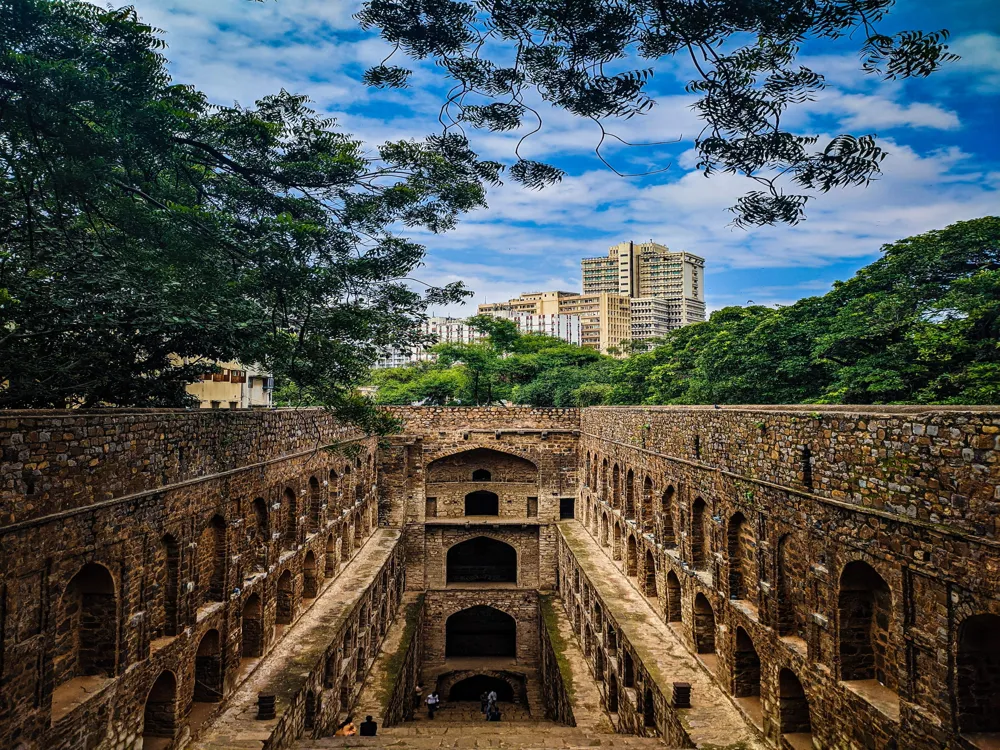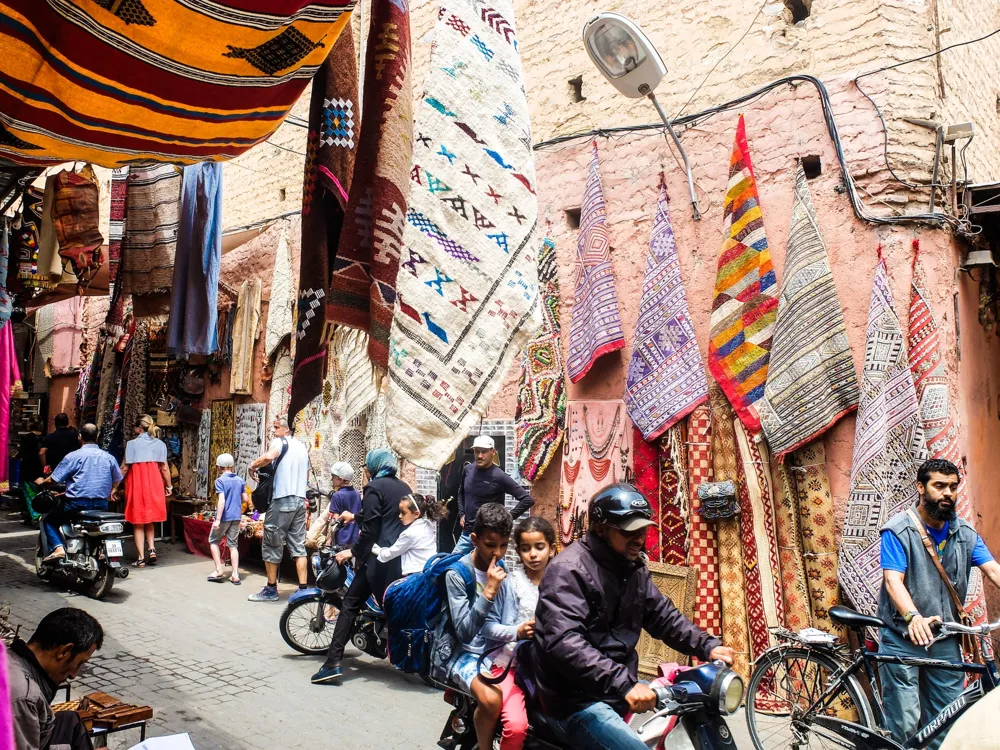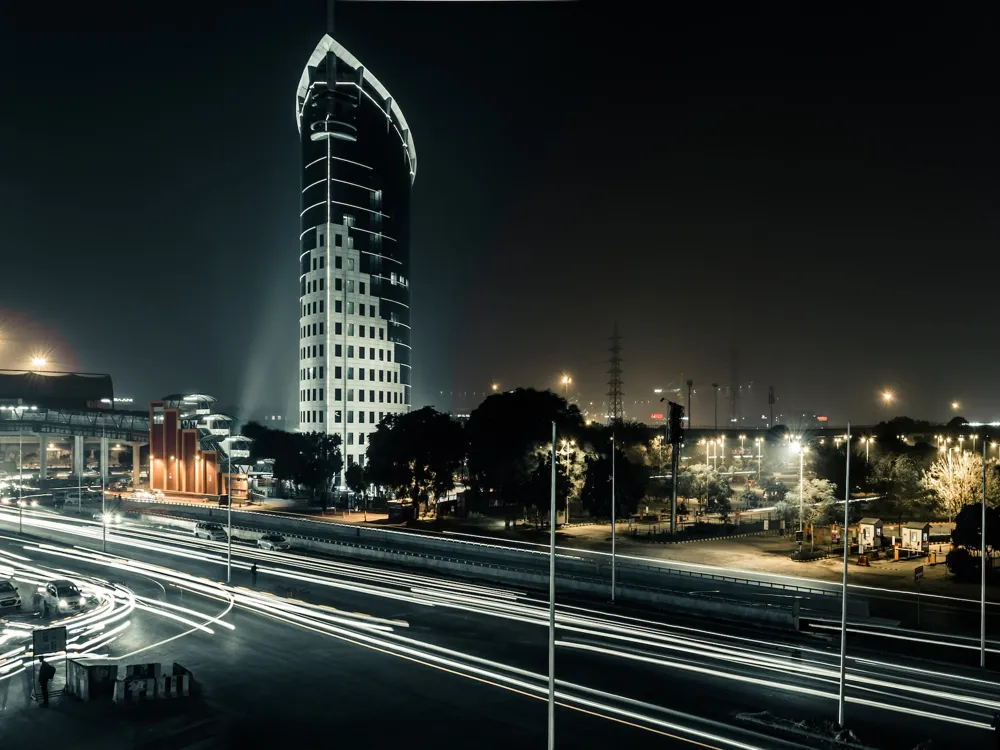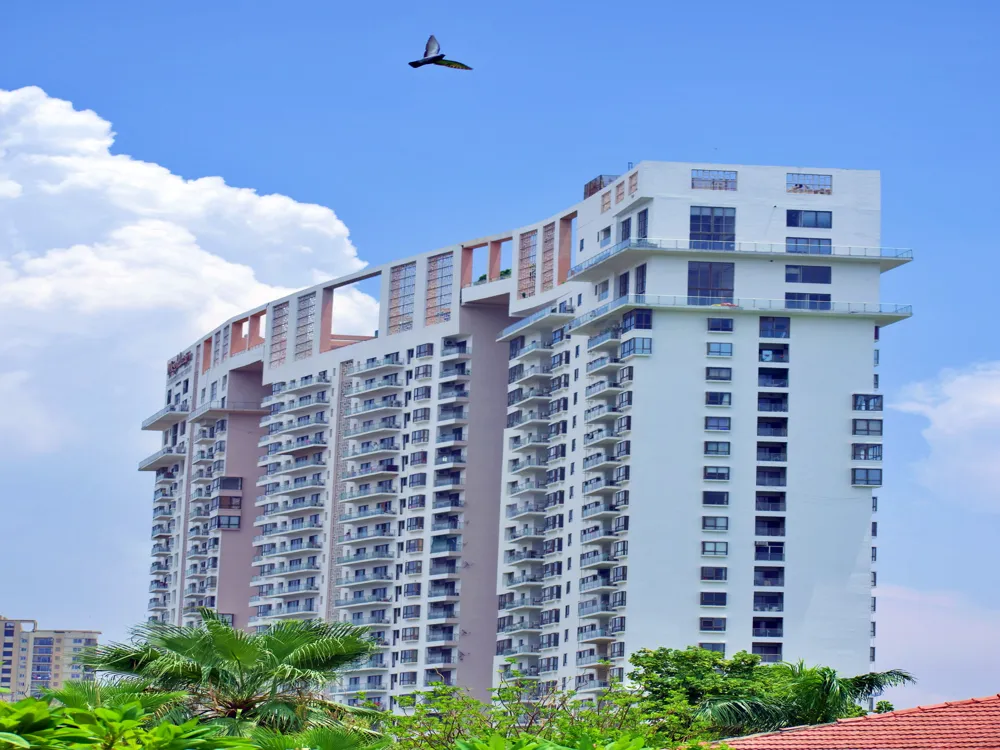The Qutub Minar, located in the Saket area of South Delhi, stands as a remarkable example of early Indo-Islamic architecture. This UNESCO World Heritage Site, made of red sandstone and marble, towers at a height of 72.5 meters, making it one of the tallest brick minarets in the world. Its construction began in 1192 by Qutb-ud-din Aibak and was completed by Iltutmish. The tower is adorned with intricate carvings and verses from the Quran, making it a significant historical monument in Delhi NCR. The Qutub Minar displays a unique blend of architectural styles. Each of its five storeys showcases a different design, influenced by both Hindu and Islamic artistry. The minaret is known for its fluted cylindrical shape and the intricate calligraphy and geometric designs that cover its surface. The balconies projecting at each level add to its aesthetic appeal and provide a panoramic view of the surrounding area. Qutub Minar is well-connected and easily accessible by various modes of transportation. The nearest metro station is Qutub Minar Station on the Yellow Line, which is about a 15-minute walk from the monument. Buses and auto-rickshaws are also available from different parts of Delhi. For those driving, there is ample parking space near the monument. It's advisable to check for traffic updates and plan your visit accordingly to avoid peak hour congestion. Read MoreOverview of Qutub Minar in Saket, South Delhi, Delhi NCR
Architecture of Qutub Minar
Tips When Visiting Qutub Minar
Click for Tips
How To Reach Qutub Minar
Qutub Minar
Saket (South Delhi)
Delhi
Ncr
₹ 4,299 onwards
View delhi Packages
Weather :
Label : Must Visit
Tags : Monument
Timings : 10:00 AM - 5:00 PM. Qutub Minar remains open for tourists all days except Sunday
Time Required : 2 to 3 hours
Entry Fee : Indians, SAARC and BIMSTEC: INR 40,
Foreign tourists: INR 600
Children up to 15 years: Free with valid ID
Nearest Metro Station : Qutub Minar on Yellow Line
Dimensions : 14.3 metres (47 feet) base diameter
2.7 metres (9 feet) top diameter
379 steps of the staircase
Height : 72.5 metres (238 ft)
Planning a Trip? Ask Your Question
Also Refered As:
Qutub Complex
Delhi Travel Packages
View All Packages For Delhi
Top Hotel Collections for Delhi

Private Pool

Luxury Hotels

5-Star Hotels

Pet Friendly
Top Hotels Near Delhi
Other Top Ranking Places In Delhi
View All Places To Visit In delhi
View delhi Packages
Weather :
Label : Must Visit
Tags : Monument
Timings : 10:00 AM - 5:00 PM. Qutub Minar remains open for tourists all days except Sunday
Time Required : 2 to 3 hours
Entry Fee : Indians, SAARC and BIMSTEC: INR 40,
Foreign tourists: INR 600
Children up to 15 years: Free with valid ID
Nearest Metro Station : Qutub Minar on Yellow Line
Dimensions : 14.3 metres (47 feet) base diameter
2.7 metres (9 feet) top diameter
379 steps of the staircase
Height : 72.5 metres (238 ft)
Planning a Trip? Ask Your Question
Also Refered As:
Qutub Complex
Delhi Travel Packages
View All Packages For Delhi
Top Hotel Collections for Delhi

Private Pool

Luxury Hotels

5-Star Hotels

Pet Friendly




















